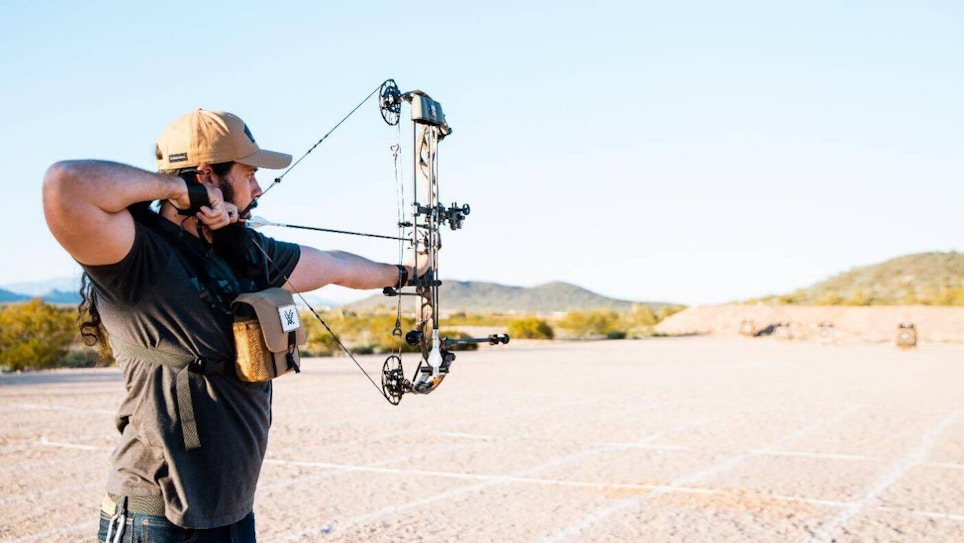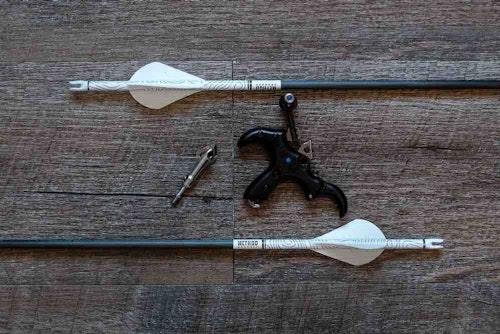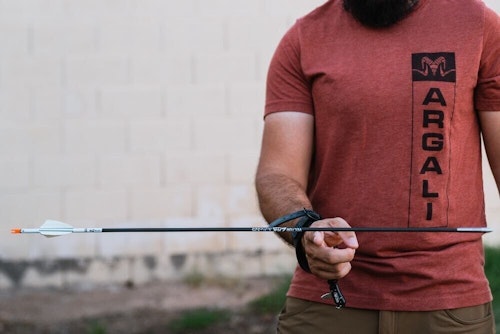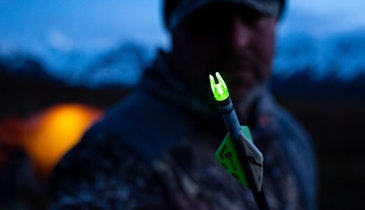
Trend or no trend, bowhunters should shoot the arrow setup that gives them the most confidence in the field during the moment of truth.
Looking back to when I was a kid, I remember seeing photos of my parents as young children. I’d laugh in my mind at their clothing choices. They looked so out of place compared to what we were wearing at my age. The most striking clothing choice to me was the bell bottoms. Gosh, they looked funny, but at the time that’s what the trend was. Fast forward to my teenage years and all of a sudden people were wearing bell bottoms again. The trend that I thought was so funny had resurfaced and was now cool again. We can see these ebbs and flows in clothing trends throughout time. What used to be “the thing” is no longer and then all of a sudden it is again.
So, what does any of this have to do with archery/bowhunting? Well, the same type of ebb and flow exists within them as it does in clothing. New perspectives from new generations have a way of shining light on old ways of the past. With that, you get this natural resurgence. The ebb and flow of arrow trends in our industry is an interesting one, to say the least. From the incredibly heavy arrows that our ancestors used to our chase for arrow speed after the fact. And then the EFOC wave followed by us now striving for a more middle-of-the-road type of arrow setup.
Is one way better than the other? The short answer is not necessarily, but there’s a reason we’ve landed on each one. It’s our constant search to be better at what we do given the current times.
To better understand that ebb and flow, I want to break down these main phases of arrow trends that we’ve gone through. In the end, maybe we’ll have a better understanding whether it all really matters, or if we’re just talking about bell bottoms.

In the Beginning
Let’s take a big rewind. The bow and arrow are far from newcomers on this big ball we call Earth. There is evidence of bows and arrows dating back approximately 70,000 years. These tools offered a legitimate way of acquiring food, and also served as a means of protection.
Bows and arrows were both carved from wood. Yew wood and witch hazel are a few that were used for building bows. Bowstrings were made from animal gut, hemp, flax, etc. Arrows were made from a variety of woods such as oak, elm or bamboo to name a few. And on the front end, the arrowhead would be flint, animal bone or something like obsidian that was sharpened and shaped. Nocks were either self-nocks, which was a groove cut into the arrow shaft, or they were carved out of horn, bone or wood. Last, but not least, fletchings were always bird feathers.
Now that we’ve absorbed a brief history lesson from our past, it’s the arrow we really want to focus on here. Why did folks long ago use what they used for arrows? I highly doubt tribes were measuring FOC and arrow speed. No, it likely came down to what was available around them, hence wood from the surrounding trees. They used what they had and made the best of it.
With that being said, what they had, even if it was a lighter wood like bamboo, it was still heavy by today’s standards. Ancient arrows with heads hovered in the 700-plus grain realm. It would be interesting to hear if they came to that by chance, or if it was calculated. Nonetheless, these arrows must have offered an immense amount of punch to pick up the weight of the limited technology they had behind their stick bows.
The above is hardly a trend, but it’s where this whole deal started and built a foundation for us to stand on as archers/bowhunters. With time would come more specific needs and wants that spanned past what was just laying around in the natural environment. While wooden arrows are still used today by some, they’d eventually be largely replaced by aluminum and then carbon shafts. Each has a higher strength-to-weight ratio than wood. This would lead to a naturally more lightweight arrow. And with that, our arrows got faster.

Speed Demons
Fast forward through a mountain of innovation and progression in archery and people started trying to answer the question, “How do we get more arrow speed?” Those 700-plus grain arrows from before were great at penetrating, but were slow in flight, which limited range and came with a very small room for error in arrow trajectory. So, we started making more lightweight arrows with these new materials.
Decreasing the weight on the arrow drastically increased speed and flattened our arrow trajectory. We did this a few different ways. Aluminum and carbon were now the main sources for arrow shafts. This translated into a lighter arrow, while still offering a good amount of durability. Also, we started making arrows smaller in diameter. A skinnier arrow doesn’t have as much surface area as a thicker one, thus maintaining its speed for a longer period of time. Between that and the smaller GPI (grains per inch), arrows we were off to the races. And to accompany those lighter arrows, we made our bows faster and faster. Aggressive cams ruled the day for a time, and soon we’d be striving to hit 300 fps, 350 fps and even 375 fps.
We indeed reached those numbers, and having a bow that shot a hunting arrow at 300 fps was a standard for a minute. With aggressive cams and lighter arrows, though, came some downsides. Aggressive cams are just in general not pleasurable to pull back. I personally got away from speed bows for a bit because my shoulder just couldn’t take it. Along with that, lighter arrows don’t penetrate as well as heavy ones. Hunters abroad, especially ones using mechanical heads, were experiencing less than ideal penetration. So a lighter arrow, while wicked fast with a flatter arrow trajectory, didn’t have as much punch downrange. Maybe our ancestors were on to something? After all, them putting arrows through animals is quite literally how they survived back then.

The Chase for Weight
Our needs and wants started to shift and then began a chase for more arrow weight instead of less. The benefits were proven and would be a fix for the faults lighter arrows had shown us in recent times. Now, we’d enter this arrow arena with new technology, though. A new perspective and new possibilities. There it was. The ebb and flow. A resurgence of the heavy arrow began.
This resurgence became incredibly popular in the name of elk hunting, but also dipped into all walks of big game bowhunting. Even whitetail hunters were sporting 600-plus grain arrows and some still are. The thinking was pretty clear here. More arrow weight would provide more momentum, or carry through power after impact. This would result in a higher likelihood of pass-through shots and leave more room for error on shot angles. It would even provide a quieter bow, as well as more resistance to wind drift. We’d use current technology (smaller-diameter carbon shafts, energy-efficient bows, etc.) paired with old ways, which resulted in an arrow that would act like a freight train with a knife on the end of it. A devastating combo that, like a fine wine, got better with time.
There are many people who still abide by the heavy arrow trend, but most have seemed to drop off the bandwagon and chase a more moderately weighted arrow given the efficiency of the equipment we have in front of us today. Heavy arrows may be more forgiving on the penetration side of things, but they are far less forgiving with arrow trajectory and speed, which play off one another in unison. Having pinpoint accuracy with these requires a pinpoint range before releasing an arrow.
Rangefinders give us this, but let’s face it, you don’t always have time to range. Sometimes, you need to estimate yardage, which is way harder to do and hit what you’re looking at accurately with a heavy arrow. Plus, people really enjoy shooting long-range these days. Heavy arrows don’t allow one to shoot nearly as far, given their quicker drop in flight.
Were we about to head back in the other direction? Surprisingly, no. Almost immediately after this, and even somewhat parallel, a new trend would pop up.

E.F.O.C.
F.O.C., or “front of center,” is the percentage of total arrow weight that sits toward the front of an arrow shaft. Generally, most “regular” arrows sit between 11%-15% F.O.C. Moderate weight forward has always been a good thing. It gives some backbone to the front of the arrow, which takes the brunt of the impact. It also helps with improving arrow flight.
E.F.O.C., though, stands for EXTREME front of center. These arrows are sitting at 20% F.O.C. or more. The thinking behind this is the front of the arrow will guide the entire shaft downrange and help essentially pull the arrow through a target/animal. A common example of how this worked was explaining tying a string to a ball and throwing the ball. The string would simply follow the ball in flight with the ball guiding it. This trend ran alongside the heavy arrow trend for a bit, but quickly seemed to die off. Of course, there are diehards who still believe in it, but most have thrown in the towel.
This E.F.O.C. trend worked for some folks, but I don’t think I’m incorrect in saying it didn’t work for most. The biggest hang-up that people experienced was getting their bow tuned with this system. Because, as we know, the more weight we add to the front of an arrow, the weaker we make the spine. This caused many tuning headaches and soon it would largely lead to the demise of this arrow trend. Achieving a tune can be done here, but for more folks than not, the juice just isn’t worth the squeeze.
Backing up to the ball and string theory, in that situation, we are throwing that combo by the ball, not the string. So, naturally, the string would follow the ball. When we shoot a bow though the force comes from the back of the arrow, which would be the “string” with the ball being the front of the arrow. Imagine trying to push that ball with the string from behind.
Present Day — And Does It All Really Matter?
Of course, we need to bring this all to the present day right? It’s been an interesting journey thus far watching the ebb and flow of these arrow trends. We started by building a foundation to stand on. Then in the name of progression and our constant desire to be better, we flowed the opposite direction. And we followed that up by flowing right back toward the start. Only now we were armed with much more advanced technology. And now, as an ebb and flow does, we have started to flow back in the opposite direction. At least that’s what it seems like.
Nowadays, from where I’m sitting, more and more folks seem to be drifting back toward a lighter arrow, but not too light. They’re searching for a middle-of-the-road setup that will check boxes on all fronts. An arrow that has a flatter trajectory, but still has carrying power through the intended target. And, of course, one that excels in durability. Micro-diameter carbon arrow shafts with a slightly lower GPI and components that can take a beating and then some. Not to mention many are using incredibly high-end broadheads that don’t give up their edge without a dang good fight. Dedicated bowhunters are dropping a significant amount of coin on their arrow setups all to scratch the itch of specificity. Folks are getting exactly what they want, how they want it.
So, does it all matter? Is ebbing and flowing with these changes necessary for our development as archers and bowhunters? It certainly got us to where we are, but ultimately I think that’s going to depend on who you ask. For some, tinkering is just plain fun and there is nothing wrong with doing so in the least. The rub with it is when newer shooters/hunters feed into this stuff and feel like they have to have something a certain way because that’s what’s “in” at the moment. When in all reality they don’t actually know why they want their arrow the way they are seeking.
It’s good to ask questions. It’s good to know as much as you can about your arrow setup. The thing that’s going to fill tags and win tournaments, though, is between your ears and in your chest. It’s your skill and decision-making in the heat of the moment. Those are only gained from experience.
When the next arrow trend pops up — and it will — let’s not forget to remind friends, family and customers that they don’t necessarily have to ebb and flow with the trends. Remember, just because your friends are wearing bell bottoms, doesn’t mean you have to.
Photos by Josh Kirchner





